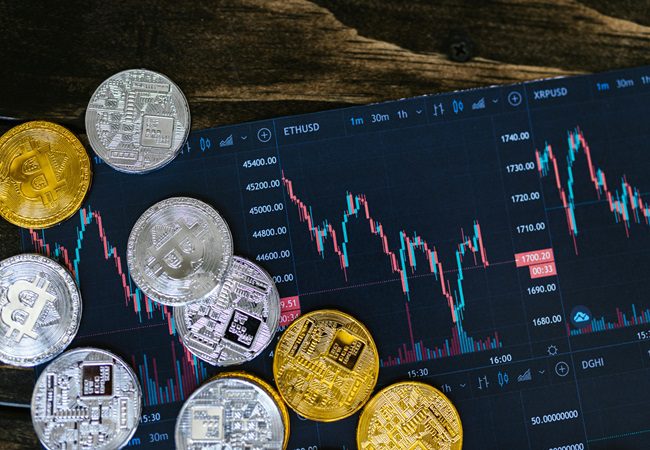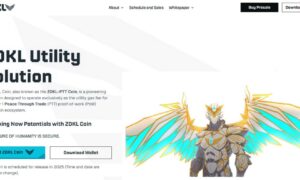Introduction:
In the ever-evolving landscape of technology and finance, a new phenomenon has emerged, bringing together the worlds of art and cryptocurrency. Non-Fungible Tokens (NFTs) have become a buzzword, revolutionizing the way we perceive and trade digital assets, particularly within the art community. In this article, we’ll delve into the world of NFTs, exploring what they are, how they work, and the impact they’ve had on the art market.
Defining NFTs:
Non-Fungible Tokens, or NFTs, represent a unique form of digital asset ownership. Unlike traditional cryptocurrencies such as Bitcoin or Ethereum, NFTs are indivisible and cannot be exchanged on a one-to-one basis. Each NFT is distinct, carrying a specific value and unique metadata that sets it apart from any other token.
The Technology Behind NFTs:
Blockchain Technology:
At the heart of NFTs lies blockchain technology, a decentralized and transparent ledger that records transactions across a network of computers. The use of blockchain ensures the authenticity and provenance of digital assets, providing a secure and immutable record of ownership.
Smart Contracts:
Smart contracts, self-executing pieces of code that run on the blockchain, play a pivotal role in the NFT ecosystem. They encode the rules and conditions of a transaction, automating the transfer of ownership when predetermined criteria are met. Smart contracts streamline the process, eliminating the need for intermediaries in the buying and selling of NFTs.
How NFTs Work:
Tokenization of Digital Assets:
NFTs tokenize digital assets, transforming them into unique cryptographic tokens. These tokens can represent various forms of digital content, including art, music, videos, and even virtual real estate. The process involves creating a digital certificate of authenticity, ensuring the uniqueness and ownership of the digital asset.
Decentralized Marketplaces:
NFTs are traded on decentralized marketplaces that leverage blockchain technology. These marketplaces, such as OpenSea, Rarible, and Mintable, provide a platform for creators to mint and sell their NFTs directly to buyers. The decentralized nature of these platforms fosters a global and inclusive marketplace for digital assets.
The Impact on the Art World:
Empowering Digital Artists:
NFTs have empowered digital artists by providing a new revenue stream and a direct connection with their audience. Previously, digital art struggled to find a market due to the ease of replication, but NFTs solve this issue by establishing digital scarcity and provenance.
Ownership and Authenticity:
NFTs address the challenge of ownership and authenticity in the digital art realm. Through blockchain technology, buyers can trace the entire ownership history of an NFT, ensuring that the digital asset is an original work and not a copy. This transparency adds a layer of trust to the art market.
New Monetization Models:
NFTs have introduced novel monetization models for artists. Through royalties embedded in smart contracts, creators can earn a percentage of future sales whenever their NFTs change hands. This ongoing revenue stream provides long-term support for artists, aligning the interests of creators and collectors.
Accessibility and Inclusivity:
The decentralized nature of NFT marketplaces breaks down geographical barriers, making it easier for artists and collectors worldwide to engage in the digital art space. This increased accessibility fosters a more inclusive art community, allowing diverse voices and perspectives to thrive.
Challenges and Criticisms:
Environmental Concerns:
The energy consumption associated with blockchain networks, particularly proof-of-work systems, has raised environmental concerns. Critics argue that the carbon footprint of NFT transactions, especially on popular networks like Ethereum, contradicts the sustainable values of the art community.
Market Saturation and Speculation:
The explosive growth of the NFT market has led to concerns about market saturation and speculation. As more artists and creators enter the space, there is a risk of diluting the value of individual NFTs, and the potential for speculative bubbles raises questions about the long-term sustainability of the market.
Copyright and Intellectual Property Issues:
Navigating copyright and intellectual property issues in the digital art space remains a challenge. While NFTs establish ownership and provenance, they do not inherently address issues related to the original creation of the digital content. Artists and platforms must address these concerns to maintain a fair and ethical ecosystem.
Looking Ahead:
Evolution of NFT Standards:
As the NFT space matures, there is a growing focus on developing and standardizing NFT protocols. Initiatives like EIP-2981 and ERC-1155 aim to improve the interoperability and efficiency of NFTs, addressing some of the current challenges in the ecosystem.
Integration with Traditional Art Institutions:
Traditional art institutions are beginning to explore the integration of NFTs into their operations. Museums, galleries, and auction houses are experimenting with digital art NFTs, exploring how blockchain technology can enhance the traditional art world.
Innovation Beyond Art:
While NFTs gained prominence in the art world, their applications extend beyond digital art. NFTs have been used to tokenize real-world assets, create virtual real estate, and even represent ownership in virtual worlds. The versatility of NFTs opens the door to innovative use cases beyond the realm of digital art.
Conclusion:
Understanding NFTs involves recognizing the transformative potential they bring to the intersection of art and cryptocurrency. From empowering digital artists and establishing ownership to introducing new monetization models, NFTs have reshaped the art market. Despite challenges and criticisms, the NFT ecosystem continues to evolve, with ongoing efforts to address environmental concerns, market saturation, and intellectual property issues. As the technology matures and standards are refined, the impact of NFTs on the art world is likely to endure, opening up new possibilities for creators, collectors, and the broader digital economy. The intersection of art and cryptocurrency, facilitated by NFTs, represents a paradigm shift in how we create, value, and exchange digital assets in the contemporary era.


































